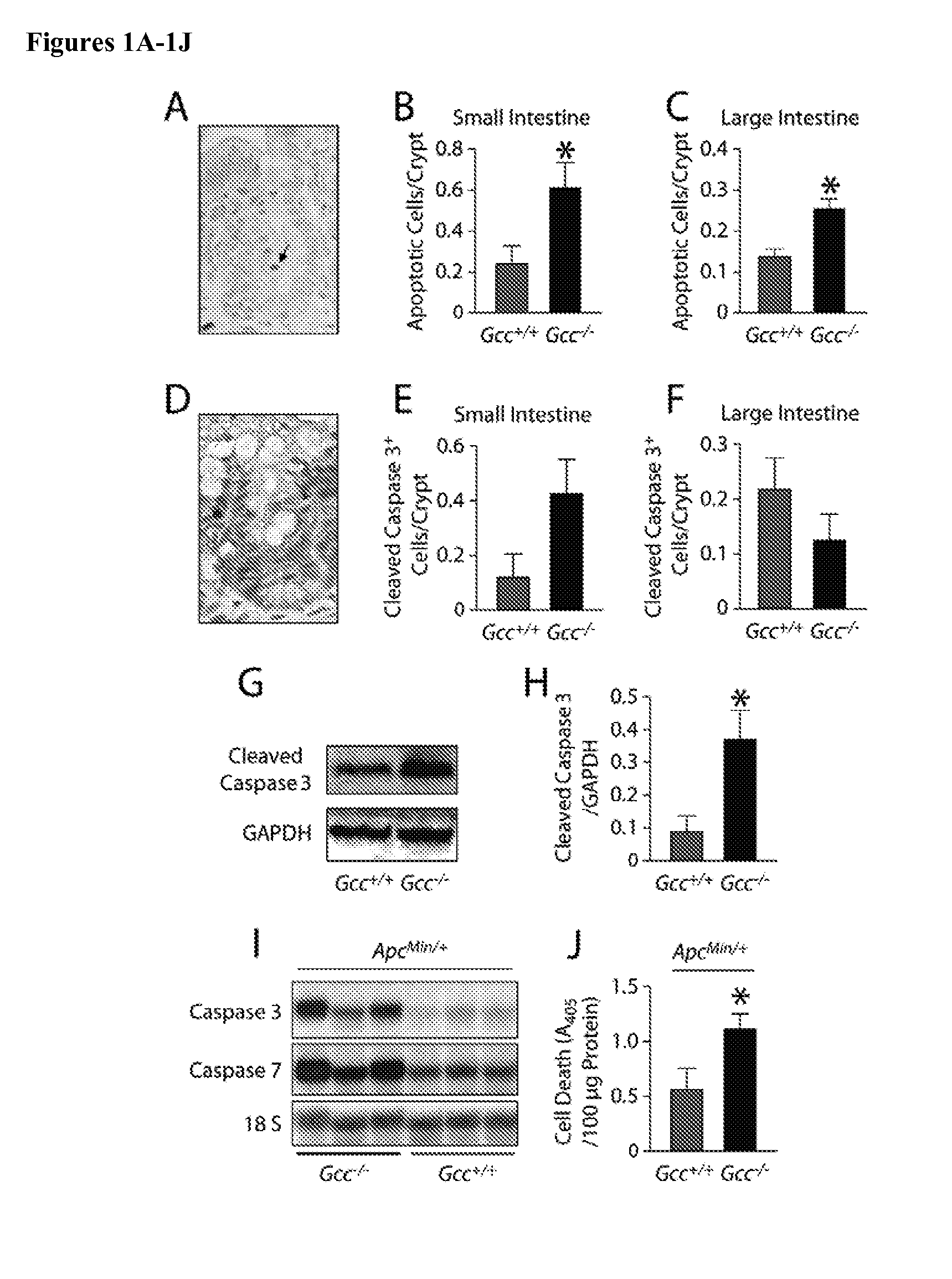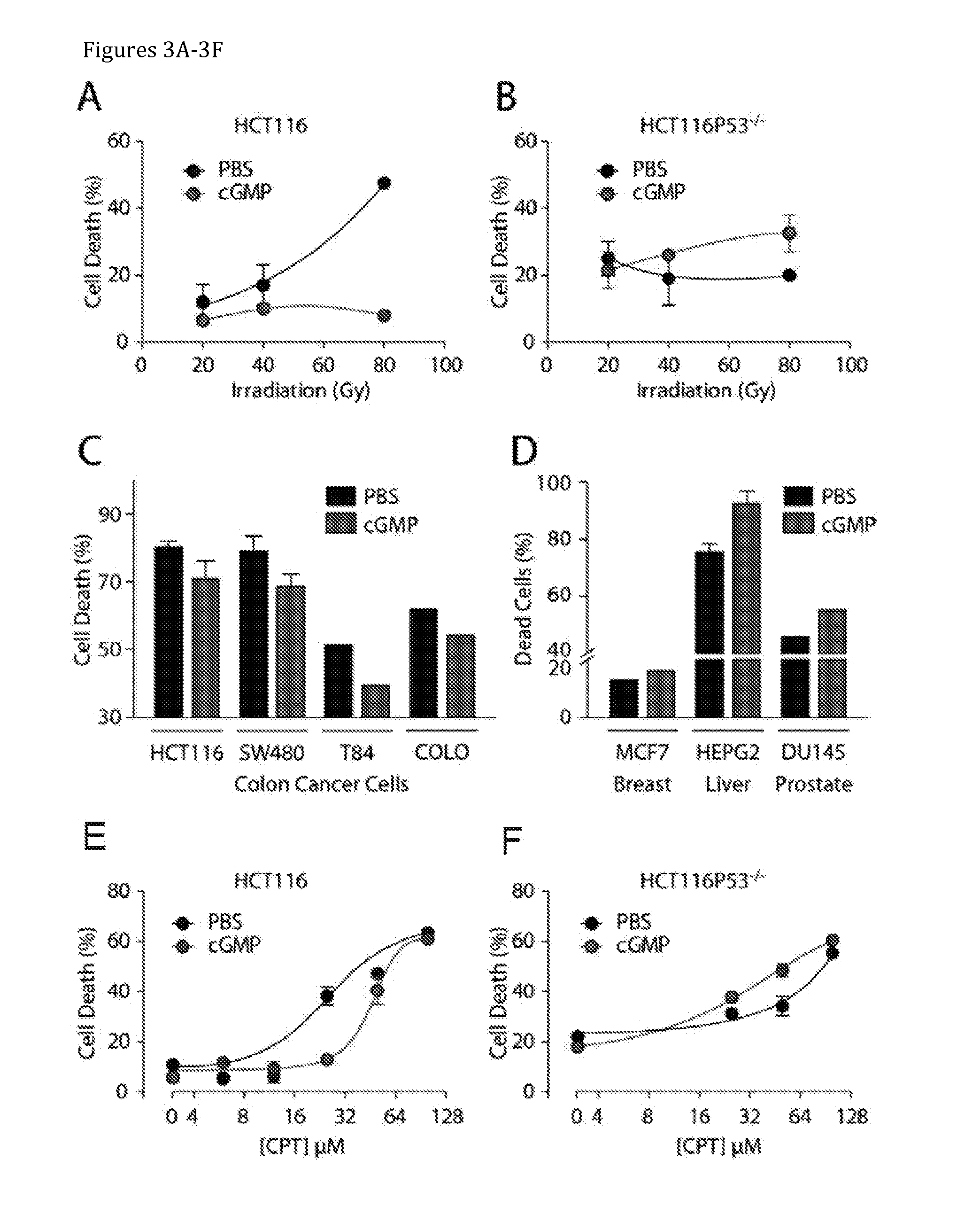Treatment and Prevention of Gastrointestinal Syndrome
- Summary
- Abstract
- Description
- Claims
- Application Information
AI Technical Summary
Benefits of technology
Problems solved by technology
Method used
Image
Examples
example
[0186]Experiments were performed to show the requirement of GCC activation in the protection of small intestine and colon cells from apoptosis and genotoxic induced cell death. The role of activation of GCC and of the presence of p53 was also evaluated. Test on cancer cells were performed to compare the protection by cGMP of colon cancer cells from cell death in compared to cGMP's potentiation of cell death in other cancers.
[0187]The data show that GCC-cGMP axis protects cell death in intestinal epithelium in physiological conditions (FIG. 1A-H) and in response to genotoxic insults (FIG. 1-J and FIG. 2). Eliminating the GCC-cGMP axis in mice, including either the receptor GCC or an endogenous ligand uroguanylin, increases radiation-induced intestinal crypt cell apoptosis (FIG. 2A-F). Elimination of GCC increased lethal GI toxicity induced by ionizing radiation (IR) in Gcc− / −, compared to Gcc+ / +, mice (FIG. 2G). Conversely, GCC downstream signaling in human colon cells in vitro atten...
PUM
| Property | Measurement | Unit |
|---|---|---|
| Time | aaaaa | aaaaa |
| Time | aaaaa | aaaaa |
| Time | aaaaa | aaaaa |
Abstract
Description
Claims
Application Information
 Login to View More
Login to View More - R&D
- Intellectual Property
- Life Sciences
- Materials
- Tech Scout
- Unparalleled Data Quality
- Higher Quality Content
- 60% Fewer Hallucinations
Browse by: Latest US Patents, China's latest patents, Technical Efficacy Thesaurus, Application Domain, Technology Topic, Popular Technical Reports.
© 2025 PatSnap. All rights reserved.Legal|Privacy policy|Modern Slavery Act Transparency Statement|Sitemap|About US| Contact US: help@patsnap.com



